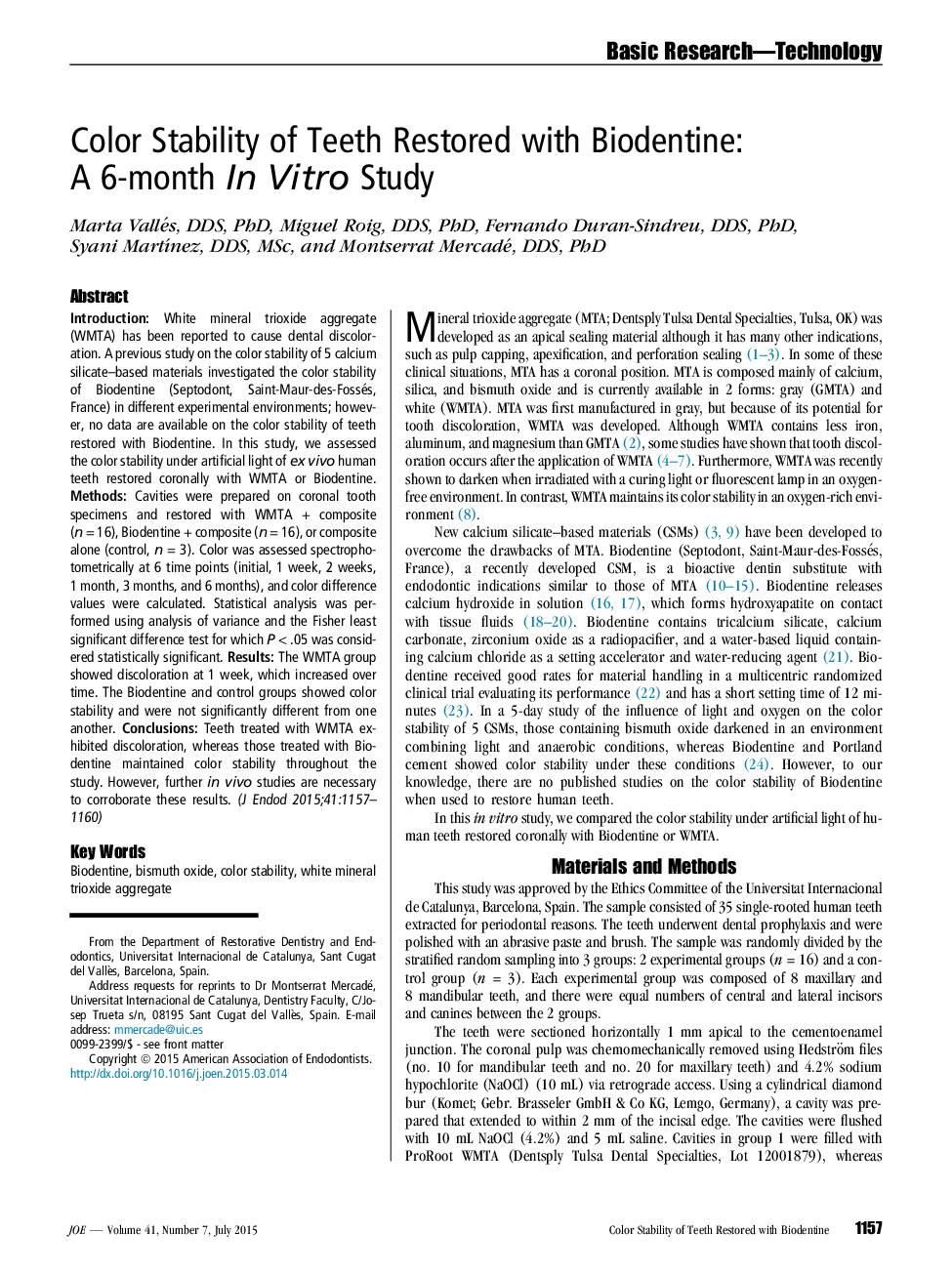| Article ID | Journal | Published Year | Pages | File Type |
|---|---|---|---|---|
| 3147480 | Journal of Endodontics | 2015 | 4 Pages |
•We assessed the color stability under artificial light of ex vivo human teeth restored coronally with white mineral trioxide aggregate (WMTA) or Biodentine.•The WMTA group showed discoloration at 1 week, which increased over time.•The Biodentine and control groups showed color stability and were not significantly different from one another.•Teeth treated with WMTA exhibited discoloration, whereas those treated with Biodentine maintained color stability throughout the study. However, further in vivo studies are necessary to corroborate these results.
IntroductionWhite mineral trioxide aggregate (WMTA) has been reported to cause dental discoloration. A previous study on the color stability of 5 calcium silicate–based materials investigated the color stability of Biodentine (Septodont, Saint-Maur-des-Fossés, France) in different experimental environments; however, no data are available on the color stability of teeth restored with Biodentine. In this study, we assessed the color stability under artificial light of ex vivo human teeth restored coronally with WMTA or Biodentine.MethodsCavities were prepared on coronal tooth specimens and restored with WMTA + composite (n = 16), Biodentine + composite (n = 16), or composite alone (control, n = 3). Color was assessed spectrophotometrically at 6 time points (initial, 1 week, 2 weeks, 1 month, 3 months, and 6 months), and color difference values were calculated. Statistical analysis was performed using analysis of variance and the Fisher least significant difference test for which P < .05 was considered statistically significant.ResultsThe WMTA group showed discoloration at 1 week, which increased over time. The Biodentine and control groups showed color stability and were not significantly different from one another.ConclusionsTeeth treated with WMTA exhibited discoloration, whereas those treated with Biodentine maintained color stability throughout the study. However, further in vivo studies are necessary to corroborate these results.
